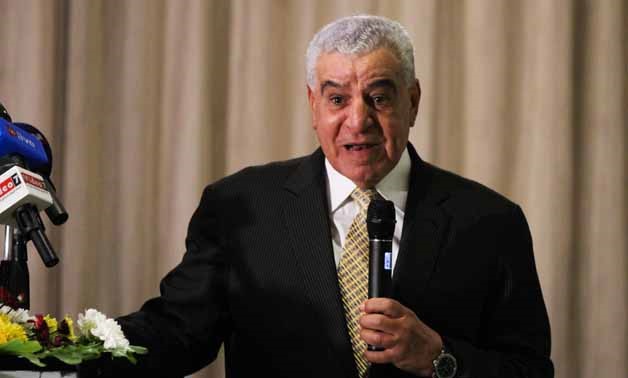
Egyptologist Zahi Hawass during the fourth International Tutankhamun Conference, organized by the Grand Egyptian Museum (GEM) at Le Méridien Pyramids Hotel - Hassan Mohamed/ Egypt Today.
CAIRO – 5 May 2018: In his speech in the Fourth International Conference of Tutankhamun, the former Egyptian Minister of Antiquities Zahi Hawass revealed that since the inception of the idea of a Grand Egyptian Museem (GEM), the famed Egyptian archaeologist viewed it from the first moment as a Grand museum. “The Grand Egyptian Museum will be a magnificent museum; it cannot be established or copied anywhere else in the world,” Hawass said.
.jpg)
A side of the attendees during the fourth International Tutankhamun Conference, organized by the Grand Egyptian Museum (GEM) at Le Méridien Pyramids Hotel - Hassan Mohamed/ Egypt Today
Hawass offered a message of gratitude to King Tutankhamun for blessing Egypt and Egyptians with many treasures that have succeeded in attracting millions of visitors and generating billions of Egyptian Pounds. Hawass spoke about important issues pertaining to Tutankhamun like the Valley of the Golden Mummies; they discovered mummies covered with Golden masks and underneath the village houses they found ancient tombs. “We always ask who found the Tomb of Tutankhamun? Was it Howard Carter?”
One of the most important things that introduced Tutankhamun to Hawass was the beautiful and unique scenes and inscriptions that were found in the area between abo Seer and Sakara and showed how he defeated his enemies.
Dr. Tarek Tawfik, the General Director of the Grand Egyptian Museum, said that the most famous pharaonic king Tutankhamun is still surrounded by many secrets that are not yet revealed.
In previous statements to Egypt Today, Tawfik has explained that King Tanis enjoys a similar religious significance for ancient Egyptians, and no lesser artistic significance for us, to King Tut’s. Due to their similarity on those two fronts, Tawfik elaborated that the matter no longer becomes an issue of losing artifacts from the Tahrir Museum’s exhibition; instead, Tut’s relocation ushers a chance of displaying other valuable artifacts.
Tawfik has also pinpointed the fact that the Tanis mask represents a different era in Egyptian history, about which very little is known, unlike the 18th dynasty to which King Tut belongs. The Tanis mask being on display will allow other Egyptian treasures to receive more prominence, while also ensuring that each Egyptian museum will have its own well-known, stand-alone exhibitions. The Egyptian Museum in Tahrir is already starting to uncover its hidden treasures, which were previously overshadowed by King Tutankhamun and the massive space he and his collection occupied.
“We now know a lot about Tutankhamun,’’ said Fayza Heikal, the conference head, noting that many know Tutankhamun as king through his artefacts, but few know his wide history.
The Grand Egyptian Museum has been organizing the conference since 2015 to discuss the best methods to restore and preserve Tutankamun’s funerary collection, ensure its safe transportation from the Egyptian Museum in Tahrir Square to the GEM and to come up with the best display techniques to present the Golden King’s collection in its new permanent exhibition halls at the GEM.
On October 3, 2017, the Grand Egyptian Museum team packaged the second historic chariot and bed of Tutankhamun to transport them to the Grand Egyptian Museum, located about two kilometers from the Giza Pyramids.
The repair team used modern materials and methods in the process of packing and moving the bed. They also used precise air lifters that facilitated moving the bed from the base area without exerting any mechanical stress on it. Previous studies on the internal structure and wooden joints of the king's bed have been implemented using an X-ray device, which greatly helped to identify the weak points in the bed and determine the amount of intervention needed to maintain it during the transfer process.
The treasures of King Tutankhamun were exhibited in the Egyptian Museum located in Tahrir Square since their discovery inside King Tutankhamun's tomb in the Valley of Kings on the western bank of Luxor in 1922.
In earlier statements, the Minister of Antiquities had revealed that 50 percent of the work needed to build the new museum has been finalized and that the first phase will be inaugurated in 2019. The first phase will include a room for Tutankhamun’s relics.

.jpg)
Comments
Leave a Comment